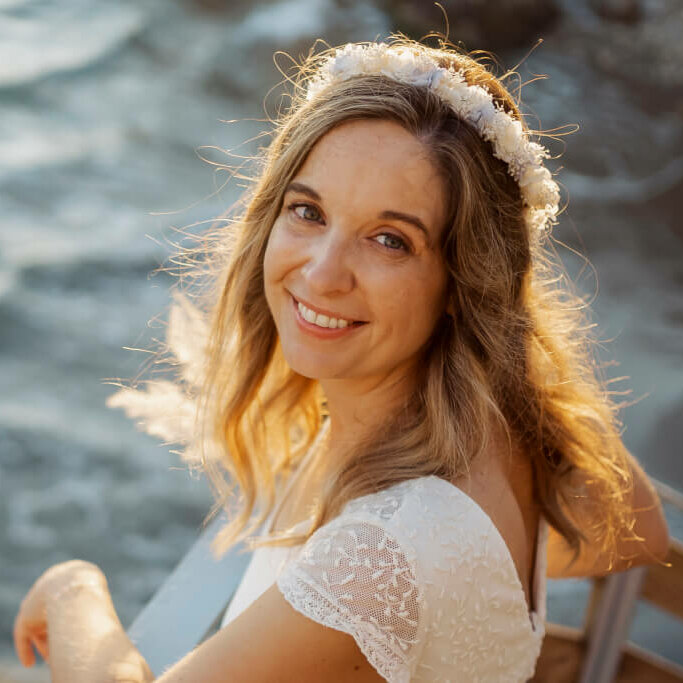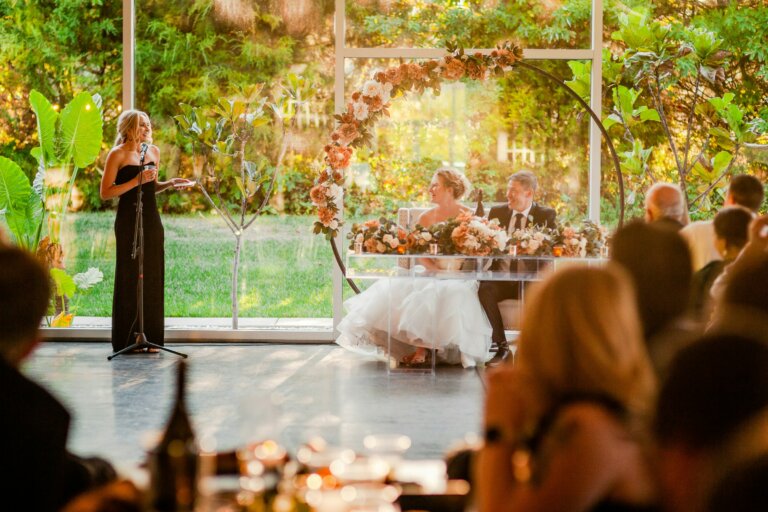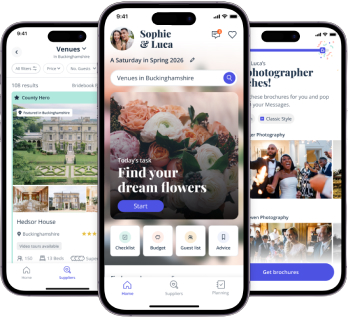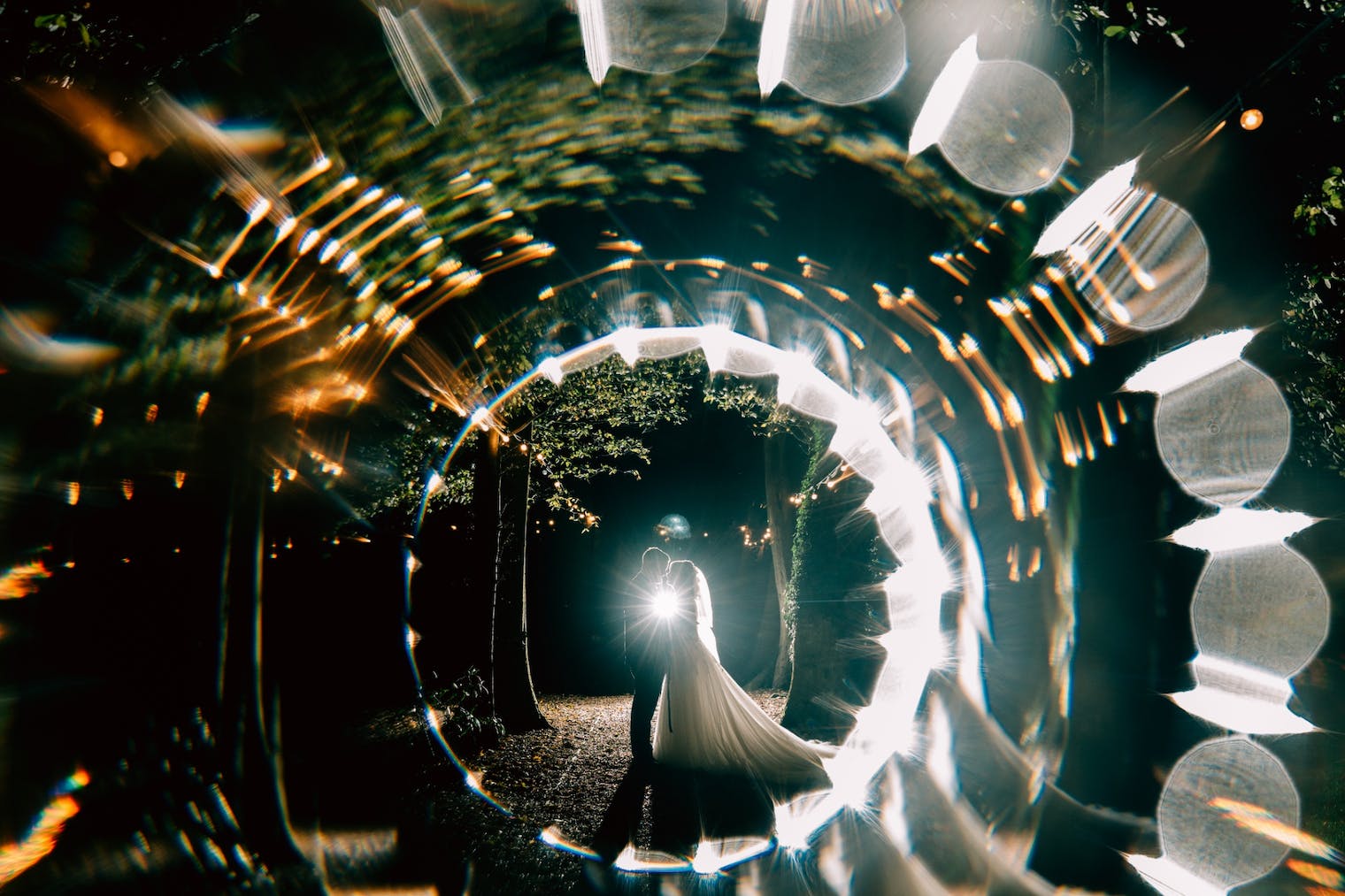
When planning your perfect wedding day, you might not be sure where to start. You might know what your ideal ceremony, venue, food, cake and everything else looks like, but one of the biggest questions you may have is how exactly they all fit together.
Organising a wedding is a little bit like putting a jigsaw together, only you don’t have instructions, so you have to do it the best you can. One of the key parts of this is creating a wedding day timeline, so everyone knows where they have to be, what time they have to be there and what’s going to happen once they’re there.
In this post, we’re going to explore what the best wedding day timeline might look like, including what order everything happens throughout the typical wedding day, how long each part usually takes and the most popular time couples choose to have the ceremony.
Do all weddings follow the same timeline?
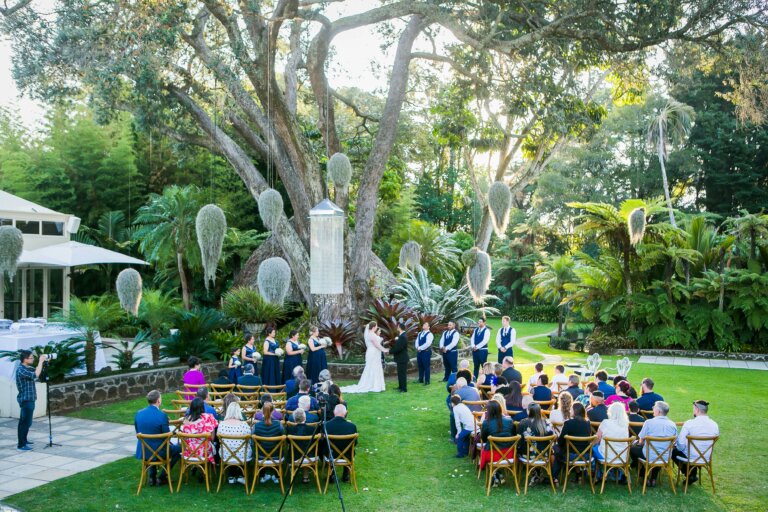
No, not all weddings follow the same timeline. However, every wedding you go to will generally follow a timeline that is at the very least reminiscent of every other wedding you might have been to. Whether you choose to have a traditional wedding, religious wedding, registry office wedding, destination wedding or something else entirely, there will always be some similarities – especially at the ceremony itself, which has to follow certain legal processes.
Some of the major factors that can influence a wedding day timeline include:
- Cultural and religious traditions – For example, many Indian weddings span over several days and there are a lot of other cultural wedding traditions that also go beyond the big day.
- The type of wedding – A traditional wedding will often last from late morning through until late at night, while a destination wedding might only last a couple of hours.
- The time of the ceremony – Traditionally, couples get married around lunchtime, but twilight weddings are quickly becoming more popular and start much later in the day.
- The formality – Less formal weddings will usually have a more relaxed structure, as they’re often far more intimate.
- The size of your guest list – The larger your guest list is, the more likely you’ll need to allow extra time for arrivals, transport, seating, photos and more.
- The time of year – Believe it or not, the season your wedding takes place in can also have an effect, especially during the winter when you might need to account for icy or snowy conditions.
- The location of your venues – The location of your venues (if your ceremony and breakfast/reception venue aren’t at the same place), specifically if they’re far apart from each other, can potentially slow things down.
- Personal preferences – Finally, your own personal preferences can dictate your wedding day timeline. At the end of the day, it’s your big day, so do whatever makes you happy.
What time does a wedding ceremony usually take place?
The majority of weddings in Australia usually start between 2pm-4pm. However, depending on the type of wedding you have, this can vary. For example, many religious wedding ceremonies start in the late morning, while ceremonies at registry offices tend to start in the afternoon. Of course, if you’ve chosen to have a twilight wedding, it will start much later in the day, often as it starts to get dark, which can be at different times depending on the season you’re getting married in.
What is the longest part of a wedding?
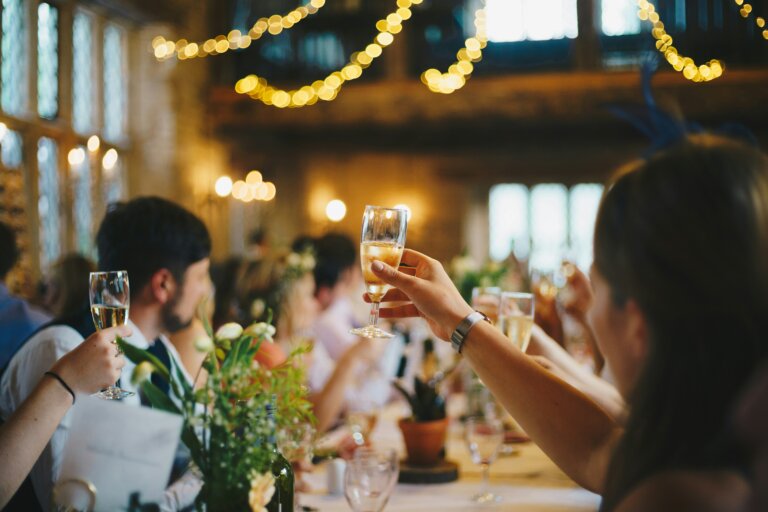
Generally, the longest part of your wedding day will be the evening reception, which will last around four or five hours (though this can be longer if you’ve invited a few party animals).
What is the shortest part of a wedding?
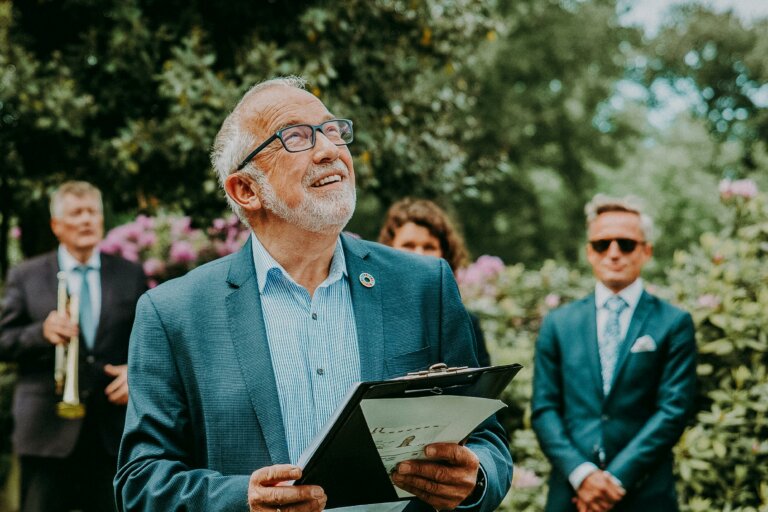
Believe it or not, despite months (or even years) of planning, the shortest part of a couple’s wedding day is often the ceremony itself. The ceremony takes approximately 45 minutes from the moment the procession starts, though it can sometimes be longer, such as with a religious ceremony where there might be hymns and readings.
A registry office wedding or civil ceremony can be as short as 10 minutes, but longer if you want to include extras like readings, or if you’ve hired a celebrant.
How long do various parts of a wedding day take?
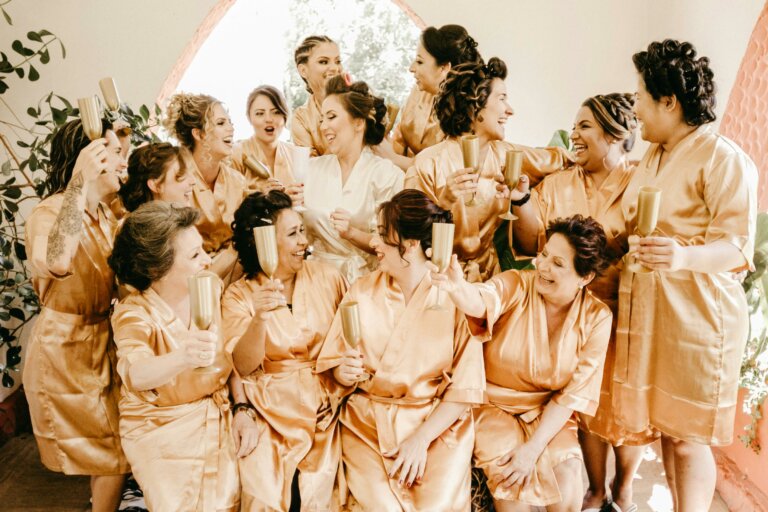
To give you an idea as to how long various parts of your wedding day will take, you can use the below times as an approximation when planning your big day.
Getting ready (including hair, makeup and getting dressed) – Approximately two hours. This may take longer if the artist you’ve hired is also doing the bridesmaids’ hair and makeup.
Pre-wedding photos (bridal party and groomsmen) – 30 to 45 minutes.
Ceremony – 45 to 60 minutes, but this can vary depending on whether it’s a religious ceremony or you have specific personal preferences. Registry office weddings can be as short and sweet as 10 minutes.
Photographs – Around one hour, but it can depend on the size of your wedding party and whether you have to travel to a specific location to take photos.
Reception drinks – Approximately an hour, which may start while you and your new spouse are having photos taken. It gives time for everyone to have a drink and unwind before the breakfast. You might want to add 10 or 15 minutes if you’re having a receiving line to welcome guests to the reception venue.
Evening reception – Once evening guests arrive, usually between 6pm and 8pm, the evening reception will go on for the rest of the night, which depends on you, your guests and the venue. The evening reception will usually last at least four hours and will often include food, such as a buffet, as well as drinks and music (and some dancing, of course). The speeches and the cutting of the cake also take place during this part of the evening.
- Speeches – This varies depending on who’s giving a speech, but there are usually at least three speeches; the father of the bride, the groom and the best man. Allow 10 minutes per speaker, so around 30 minutes in total, though this might be longer if others wish to say a few words as well.
- Cutting of the cake – 5 to 10 minutes, but most of that is the time taken getting everyone together and allowing people to take photographs.
What is a typical wedding timeline?
Depending on the type of wedding you have, wedding timelines can have a few key differences. Below are some examples of how you might expect a wedding day to look based on some of the most popular types of weddings couples go for.
Example traditional wedding day timeline
As we highlighted above, traditional wedding ceremonies commonly start between 2pm-4pm. The below example of a traditional wedding day timeline is what your day might look like if your ceremony were to start at midday.
9am – Your alarm goes off and it’s time for a shower (speak to your hairstylist beforehand about whether you should wash your hair that morning or not).
9.30am – Breakfast. Don’t skip this step because you’ve got a long day ahead of you. You might want your bridesmaids/groomsmen to join you and start the celebrations early with a mimosa.
10am – If you’ve hired a photographer, they’ll arrive to capture everyone getting ready. Your hair and makeup artist(s) will likely arrive around the same time.
10.15am – Hair and makeup starts on the bridal party (if they’re doing it for them).
11am – The flowers and bouquets are delivered and the vendors you’ve hired will arrive at the venue to start setting everything up.
11.30am – The bride’s hair and makeup start.
12.30pm – The bride gets dressed. At the same time, the groom will head to the venue to begin greeting guests.
1pm – Bridal party photos and the wedding transport arrives (if you need it).
1.30pm – The bride sets off for the venue as your final guests arrive.
1.45pm – Your guests are asked to take their seats.
1.55pm – The bride arrives at the venue and everyone takes their place. The photographer will take some last-minute photos of the bride and whoever she is walking down the aisle with.
2pm – The ceremony starts.
2.45pm – The ceremony ends and the couple leaves the venue with the photographer for photographs, also joined by friends and family.
3pm – Time for family photos (and photos with close friends of the couple). Other guests leave to the venue where the cocktail hour is being held.
4.30pm – The couple and those involved in the photos arrive at the cocktail hour. Time to mingle and for any additional photos to be taken.
5pm – Evening guests begin to arrive
5.30pm – Guests start being seated for dinner service.
6pm – Dinner service begins.
7.15pm – Dinner service ends and the wait staff pours fizz for the speeches to begin. The cutting of the cake may also take place during this time.
7.45pm – The speeches start, usually with the father of the bride. If you’d like golden hour photos, do these around this time (or a little earlier, depending on the season) and shift the timeline accordingly.
8.15pm – First couple dance and parents dance.
8.30pm – Open dance floor! Time for you to celebrate with your guests!
11.45pm – The couple leaves the venue.
12pm – The evening reception finishes and your guests leave the venue.
Example registry office wedding day timeline
Registry office weddings are often the most affordable type of wedding, which means they don’t usually include as many individual steps. If you’re having a registry office wedding, it might follow something similar to the following timeline:
8am to 10.30am – A leisurely morning, ensuring you have a good breakfast. If you have a small budget, this is a great time to visit a hairstylist and make-up artist, as going to them rather than them coming to you keeps costs down.
11am – Get ready with family and friends close by.
12.30pm – Set off for the registry office.
12.50pm – Arrive at the registry office and your guests take their seats. If you’ve hired a photographer they will begin taking photos.
1pm – The ceremony begins.
1.15pm – The ceremony ends.
1.30pm – A short photography session outside the registry office with the couple and friends and family.
2.15pm – A meal at a local restaurant or hotel, including the speeches.
6pm – The wedding party moves on to a different local venue, such as a bar or hotel, to host a party for wider family and friends. This will include the cutting of the cake, the first dance and a buffet. However, this all depends on your budget and preferences.
Example twilight wedding timeline
A twilight wedding starts much later in the day, which means there’s not as much time as with a traditional wedding. However, many of the same things are still included, just condensed, which makes it great for getting married on a budget.
8am to 2pm – A leisurely morning and lunchtime spent with family and friends. You may take the time to relax (a morning spa session with the rest of the bridal party goes down a treat) or visit your local beauty stylist to save money on hair and makeup.
3pm – You start to get ready as vendors arrive at the venue to prepare. If you’ve hired a professional stylist and photographer, they’ll also arrive around this time.
4.30pm – The groom arrives at the venue to welcome guests.
5pm – The bride gets dressed.
5.30pm – The bride leaves for the venue.
5.45pm – Guests take their seats.
5.55pm – The bride arrives at the venue and everyone gets into position.
6pm – The ceremony begins.
6.45pm – The ceremony ends.
7pm – The couple and their guests take photographs to take advantage of the setting sun (depending on the season, the timing of this would need to shift slightly).
8pm – Now it’s time for the evening reception and dinner to begin. This will also include the speeches, cutting of the cake and first dance.
11.45pm – The couple leaves the venue.
12pm – The reception finishes and your guests leave the venue.
Plan your perfect wedding with Bridebook
Now that you know some rough timelines that wedding days often follow, you can start planning your own big day exactly as you like it. Sign up to Bridebook to get access to all the tools, information and resources you need so you can plan your perfect wedding.
